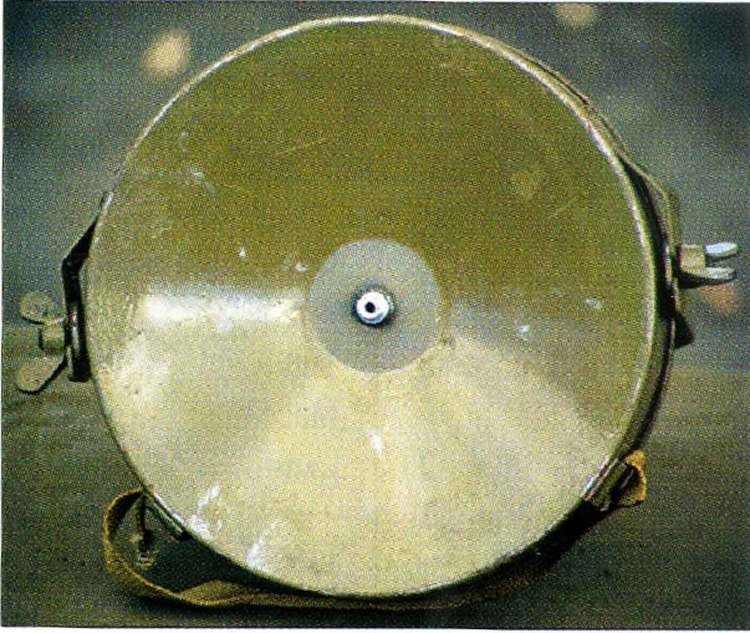 | ||
The MON-100 is a circular, sheet metal bodied, directional type of anti-personnel mine designed and manufactured in the early 1960s by the Soviet Union. It is designed to wound or kill by fragmentation and resembles a large bowl.
Contents
Design
The MON-100 mine body has a smooth, well finished appearance with a webbing handle mounted on the upper edge, it is usually attached to a mounting shackle by wing nuts on either side of the mine body (the shackle is connected to a spike for securing the mine to buildings, trees etc.). The concave face of the mine has a detonator cavity in its center (this is the side aimed at the target).
The mine contains 2 kg of explosive to propel 450 steel rod fragments to a lethal range of 100 m, at maximum range the spread of the fragmentation is 9.5 m. The mine alone weighs 5 kg but with the shackle and mounting spike the weight is 7.53 kg. The MON 100 can be command actuated using a PN manual inductor attached by demolition cable to an EDP-R electric detonator. It can also be actuated by a variety of booby trap (BT) switches including:
The MON-100 will usually be mounted above ground level on the surface or up in trees to give the greatest dispersion of fragments. The mine can be located visually or with metal detectors under most field conditions. Depending on its actuation method the MON-100 may be resistant to blast overpressure from explosive breaching systems like the Giant Viper and M58 MICLIC. The mine is also produced for export to Poland.
Specifications
Demining hazards
Because it is a directional type of mine, it should never be approached from the front, always from the rear or side.
The MON-90 is known to be used with the VP13 seismic controller which prevents close approach for any clearance operations. If the mine is encountered with any type of electrical wires running from it, secure both ends of the wire before approaching the mine, because it could be linked to another mine or other booby trap device.
On detonation the mine will normally propel lethal fragmentation to a range between 75 and 125 meters. The actual hazard range for this mines can be as high as 160 metres (this is directly in front of the mine, fragmentation range and density drop off to 125 meters to the sides and rear of these mines). Always be alert for well concealed blast mines laid along tripwires (don't get tripwire fixation).
